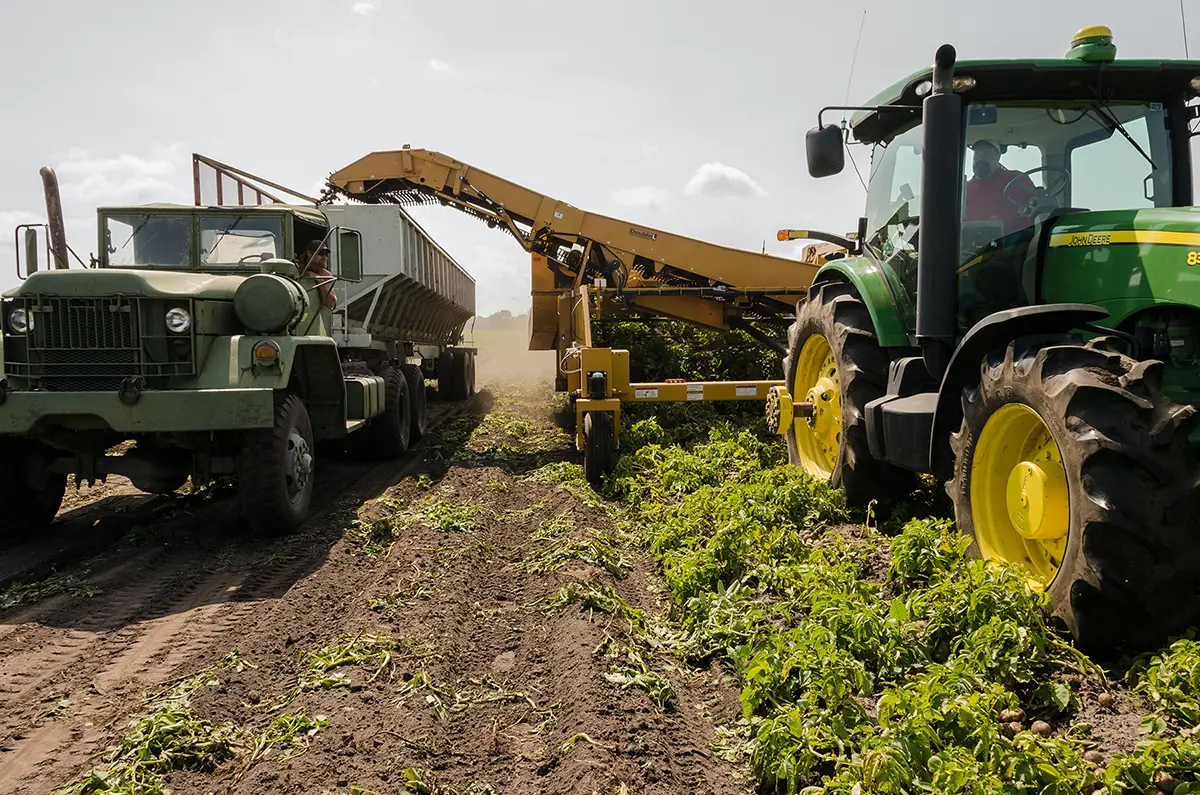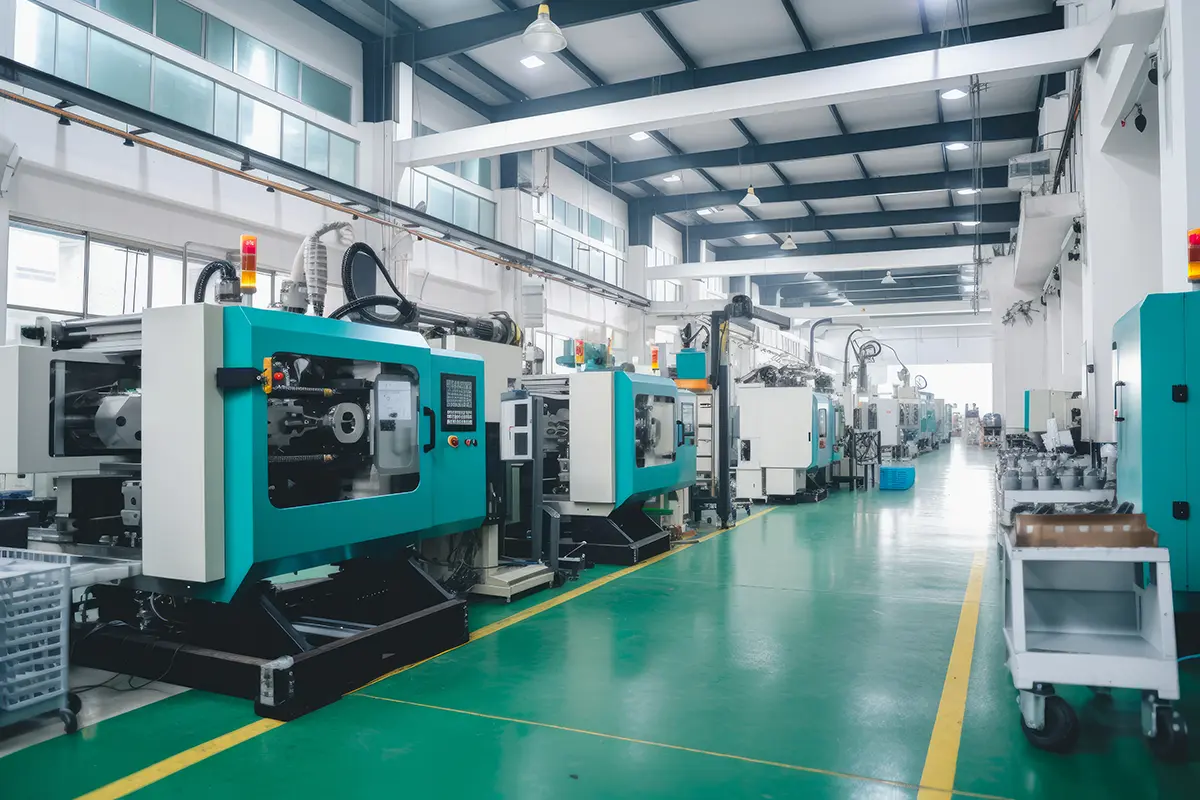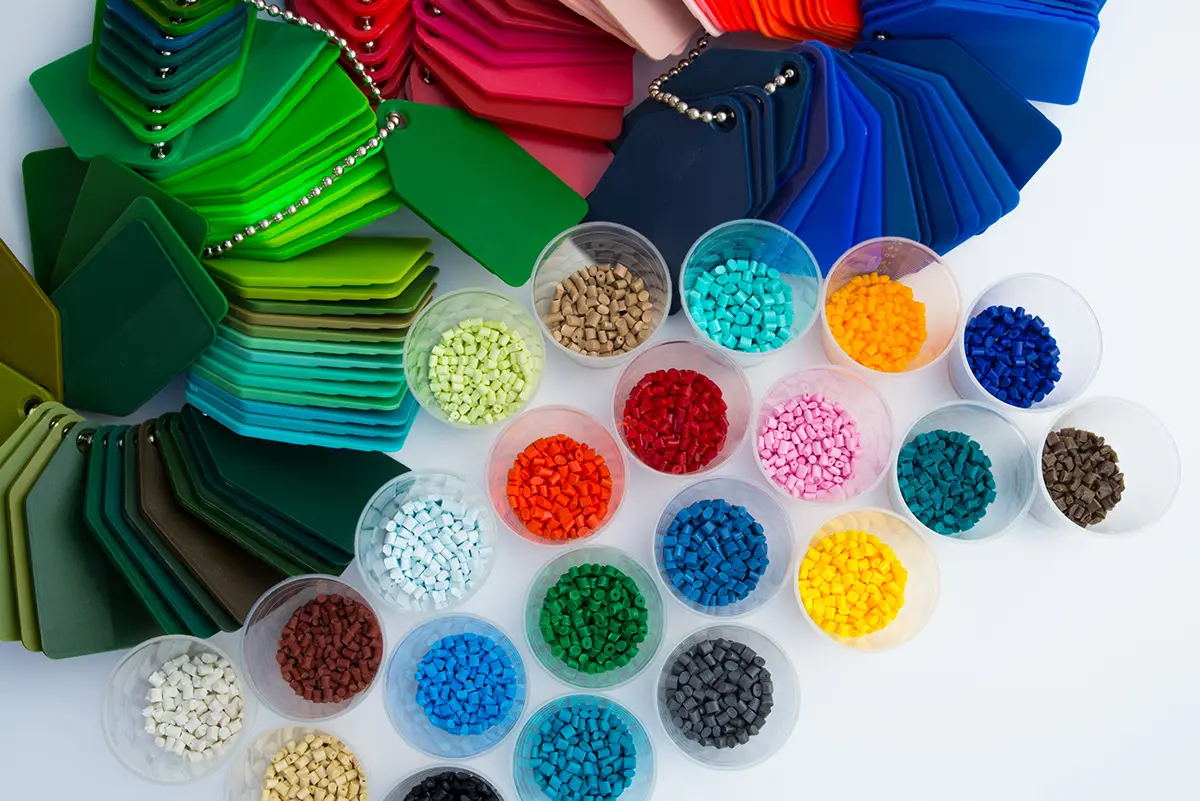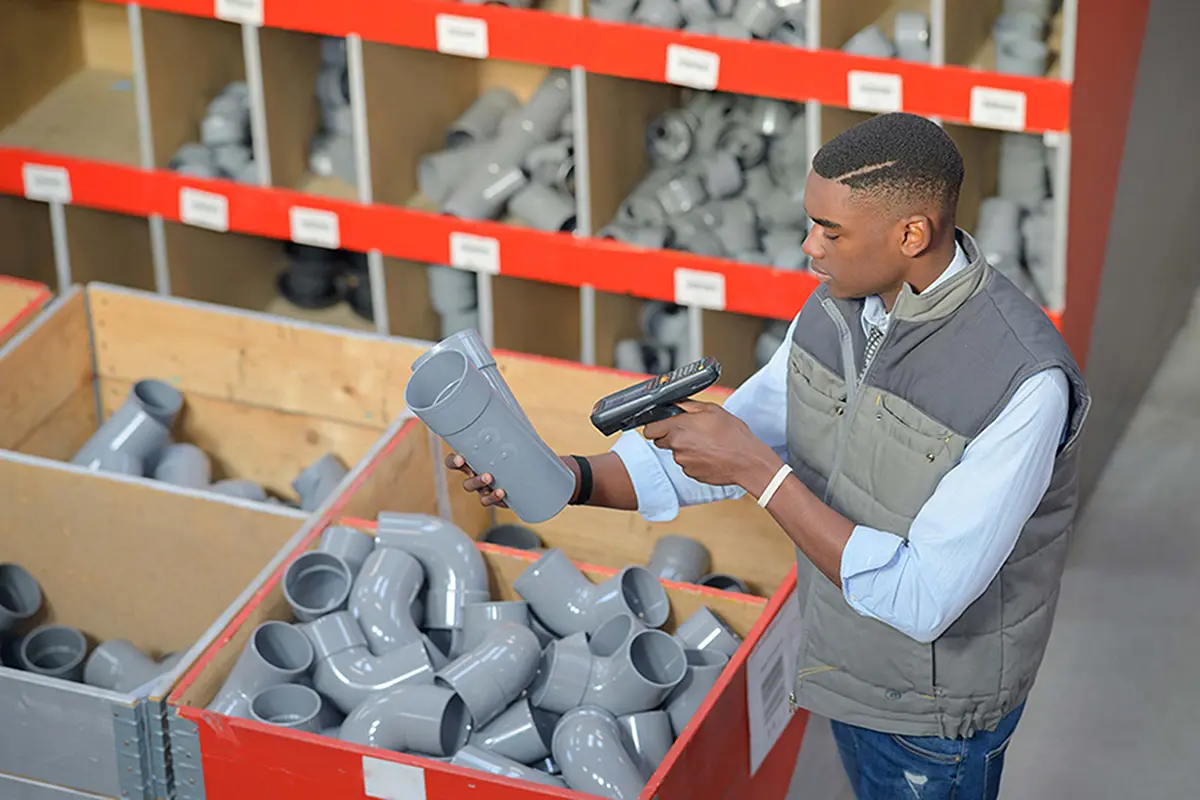The Impact of Plastic Injection Molding on Agricultural Equipment
Plastic parts hold immense significance in the manufacturing of diverse components utilized in agricultural machinery. This pivotal production method entails the injection of melted plastic material into a mold cavity, enabling it to undergo the cooling and solidification process, ultimately adopting the desired form. Let’s delve into an overview of plastic injection molding within the realm of agricultural equipment production:
Plastic Injection Molding: Vital for Agricultural Machinery Components
These components encompass a broad spectrum, which includes, but is not restricted to:
Housings and Enclosures:
Plastic injection molding is utilized to create robust and durable housings that offer crucial shielding and reinforcement for electrical and mechanical elements. – Panels and covers: Plastic panels and covers are used to shield internal parts and provide access for maintenance.
Gears and pulleys:
Injection molded plastic gears and pulleys transmit power and facilitate movement in agricultural machinery.
Connectors and fittings:
Plastic injection molded connectors and fittings are used for fluid and electrical connections.
Valves and nozzles: Injection molded plastic valves and nozzles control the flow of fluids in irrigation systems and other applications.
Handles and grips: Plastic handles and grips provide ergonomic comfort and control for equipment operation.
Design Flexibility: Mold Your Vision with Plastic
This flexibility enables manufacturers to optimize the functionality, performance, and aesthetics of agricultural equipment components.
Plastic injection molding offers a wide variety of materials suitable for agricultural equipment.
Common materials include polyethylene (PE), polypropylene (PP), acrylonitrile butadiene styrene (ABS), polycarbonate (PC), and more. The selection of materials depends on factors such as strength, durability, chemical resistance, and environmental conditions in which the equipment operates.
Plastic injection molded components are generally lighter than their metal counterparts.
This weight reduction offers several advantages in agricultural equipment, including improved fuel efficiency, easier handling, and reduced equipment fatigue.

These include moisture, chemicals, UV radiation, and extreme temperatures as well as impact resistance. By possessing such resilient properties, these components are well-equipped to endure the rigorous conditions commonly encountered in agricultural settings. Plastic injection molding can provide cost-effective solutions for agricultural equipment manufacturers. Through plastic injection molding, components can be meticulously engineered to exhibit exceptional durability and resistance against a multitude of environmental challenges.
The process enables high-volume production with consistent quality, minimizing labor costs and reducing material waste for a low-cost component. Additionally, the longevity and low maintenance requirements of plastic components contribute to long-term cost savings. Plastic injection molding in the realm of agricultural equipment has embraced sustainability practices. These initiatives encompass the adoption of recycled materials, the implementation of eco-friendly manufacturing processes, and the promotion of responsible disposal and recycling of plastic components.
The utilization of plastic injection molding in Illinois has brought about a transformative impact on the production of agricultural equipment components. It offers a blend of design flexibility, durability, and cost efficiency. By incorporating plastic injection molded parts, manufacturers of agricultural machinery can elevate equipment performance, enhance productivity, and contribute to sustainable farming practices.

When selecting a manufacturer for plastic injection molding in agricultural equipment, it is vital to consider several factors:
Experience and Expertise in Injection Molding For Agriculture Equipment:
Seek a manufacturer with a substantial track record and expertise in plastic injection molding for the agricultural industry. A company that possesses extensive experience is likely to possess the knowledge and skills to meet your specific requirements.
Plastic Injection Molding Manufacturing Capabilities:
Evaluate the manufacturer’s capabilities in terms of equipment, technology, and production capacity. Ensure that they possess the necessary plastic injection molding machinery and infrastructure to handle the production volume and complexity of the plastic components needed for your agricultural equipment.
Quality Control and Certifications in Plastic Injection Molding:
Inquire about the manufacturer’s quality control processes and certifications. A reliable manufacturer should have robust quality control measures in place to ensure consistent and high-quality output. Certifications such as ISO 9001 demonstrate their commitment to quality standards.
Plastic Injection Molding Customization and Design Support:
Check if the manufacturer offers customization options and design support. Agricultural equipment may have unique specifications, and the manufacturer should be able to tailor the plastic components to meet your specific requirements. They should also provide assistance in optimizing the design for functionality and manufacturability.
Material Selection for Plastic Injection Molding:
Evaluate the manufacturer’s expertise in material selection for plastic injection molding. Different plastics have varying properties, and the manufacturer should be knowledgeable about selecting the appropriate materials for the specific applications in agricultural equipment.
Track Record and References for Plastic Injection Molding Manufacturing:
Conduct thorough research on the manufacturer’s track record and reputation. Seek out customer reviews, testimonials, and references to gain insights into their past performance and the level of customer satisfaction. A reputable manufacturer will have a positive track record and a strong customer base.
Pricing and Lead Times for Plastic Molding Manufacturing in Agriculture:
Obtain quotes from multiple manufacturers and compare their pricing. While cost is an important factor, it should not be the sole determinant. Consider the value provided in terms of quality, reliability, and service. Additionally, discuss lead times to ensure that the manufacturer can meet your production schedule requirements.
Customer Support and After-Sales Service for Plastic Molding Manufacturing:
Evaluate the manufacturer’s commitment to customer support and after-sales service. A reliable manufacturer should be responsive to your inquiries, provide regular updates, and offer support throughout the production process. They should also be willing to address any issues that may arise after delivery.
Sustainability Initiatives of Plastic Molding Manufacturing:
If sustainability is a priority for your agricultural operations, inquire about the manufacturer’s sustainability initiatives. Assess their efforts in using recycled materials, reducing waste, and implementing environmentally friendly manufacturing practices. Choose a manufacturer that aligns with your sustainability goals and values.
Collaboration and Communication:
Lastly, consider the manufacturer’s willingness to collaborate and communicate effectively. A good manufacturer should be proactive in understanding your requirements, providing suggestions, and maintaining open lines of communication throughout the project.
By carefully evaluating these factors, you can choose a manufacturer of plastic injection molding for agricultural equipment that aligns with your needs and ensures the production of high-quality and reliable components.
CBM Plastics is a manufacturing company that specializes in plastic injection molding and thermoforming. Custom injection molding of components requires molten plastic through tooling.
CBM Plastics, being a plastic injection molding company, plays a significant role in the production and supply of plastic components and injection molding services used in various industries, including agriculture. Agricultural equipment manufacturers often rely on companies like CBM Plastics USA to produce high-quality plastic injection molded parts for their machinery.
The impact of plastic injection molding on agricultural equipment, as discussed in the article, highlights the benefits of using plastic components in farming machinery. These benefits include lightweight design, durability, enhanced functionality, and sustainability. CBM Plastics USA, being a manufacturer specializing in plastic injection molding, would be capable of producing such components for agricultural equipment.
Through their expertise in plastic injection molding, companies like CBM Plastics USA contribute to the development and production of innovative and efficient agricultural equipment. They play a vital role in shaping the impact of plastic injection molding on agricultural equipment by providing reliable and high-quality plastic components that meet the specific needs of the agricultural industry.

FAQ's
- How does plastic injection molding benefit agricultural equipment?
Plastic injection molding offers numerous benefits to agricultural equipment. It provides design flexibility, allowing for the creation of intricate and customized components. The process produces durable and reliable parts that can withstand harsh environmental conditions encountered in agriculture. Plastic injection molding also offers cost efficiency, as it allows for high-volume production and reduces material waste. Overall, it enhances equipment performance, increases productivity, and contributes to sustainable farming practices.
- What are the advantages of using plastic injection molded parts in agricultural machinery?
Using plastic injection molded parts in agricultural machinery offers several advantages. Firstly, these parts can be engineered to possess high durability and resistance to environmental factors such as moisture, chemicals, UV radiation, and extreme temperatures. This ensures that the components can withstand the demanding conditions often encountered in agricultural applications. Additionally, plastic injection molding allows for design flexibility, enabling the creation of complex and customized components that meet specific requirements. The process also enables cost efficiency through high-volume production and reduced material waste. By incorporating plastic injection molded parts, agricultural machinery manufacturers can enhance equipment performance, increase productivity, and contribute to sustainable farming practices.
- How does the lightweight nature of plastic components impact agricultural equipment?
The lightweight nature of plastic components in agricultural equipment brings several benefits. It improves fuel efficiency, increases payload capacity, enhances maneuverability, reduces soil compaction, simplifies transportation, enhances operator comfort and safety, and reduces wear and tear. These advantages lead to increased productivity, cost savings, and improved sustainability in agriculture.
- How do plastic components contribute to the durability and longevity of agricultural machinery?
Plastic components play a crucial role in enhancing the durability and longevity of agricultural machinery. Plastic materials used in these components are often chosen for their excellent resistance to various environmental factors such as moisture, chemicals, UV radiation, and extreme temperatures. This inherent resistance helps protect the machinery from corrosion, degradation, and damage caused by harsh conditions encountered in agricultural settings. Plastic components also exhibit high impact strength, reducing the risk of breakage or failure during operation. Moreover, plastic’s lightweight nature minimizes the overall stress and strain on the machinery, enhancing its structural integrity and prolonging its lifespan. By incorporating plastic components, agricultural machinery becomes more robust, resilient, and capable of withstanding demanding field conditions, thus contributing to its durability and longevity.
- What functional enhancements can be achieved through plastic injection molding in agricultural equipment?
Plastic injection molding brings numerous functional enhancements to agricultural equipment. It enables the creation of precise and intricate designs, allowing for components with complex geometries and customized features tailored to specific functional requirements. By integrating multiple parts into a single component, assembly time is reduced, leading to improved overall efficiency.
Furthermore, plastic injection molded parts can be engineered to possess high strength, durability, and resistance to environmental factors. This ensures their ability to withstand the challenging conditions encountered in agriculture, including moisture, chemicals, UV radiation, and extreme temperatures.
The process also facilitates the incorporation of functional features like snap-fit connections, hinges, and sealing surfaces. These additions enhance the ease of assembly, operation, and maintenance of agricultural equipment.

Additionally, plastic injection molding allows for the integration of supplementary components such as fasteners, inserts, and sensors directly into the molded parts. This streamlines the overall design and functionality of the equipment. In summary, plastic injection molding offers functional enhancements in agricultural machinery through design flexibility, durability, resistance to environmental factors, and the ability to incorporate advanced features. These improvements ultimately contribute to enhanced equipment performance and increased productivity in farming operations.
- Are plastic materials used in agricultural equipment recyclable?
Plastic materials commonly employed in agricultural equipment can indeed be recycled. Varieties like polyethylene (PE), polypropylene (PP), and polycarbonate (PC) are frequently utilized for manufacturing agricultural equipment components, and these materials possess recyclability. Recycling plastic materials derived from agricultural equipment not only aids in waste reduction but also contributes to resource conservation. However, it is crucial to prioritize the proper sorting and collection of plastic waste to ensure the effectiveness of recycling processes. By implementing responsible recycling practices, the agricultural industry can play its part in fostering a more sustainable and circular economy.
- How does the use of recycled plastic in manufacturing agricultural equipment benefit sustainability?
The utilization of recycled plastic in the manufacturing of agricultural equipment brings several sustainability benefits. Firstly, it reduces the demand for virgin plastic, conserving valuable resources and minimizing the environmental impact associated with the extraction and production of new plastic materials.
Additionally, incorporating recycled plastic helps to reduce waste and prevent plastic from ending up in landfills or polluting ecosystems. By giving new life to discarded plastic materials, the agricultural industry contributes to a more circular economy and reduces the overall carbon footprint.
Moreover, using recycled plastic in agricultural equipment manufacturing can lower energy consumption and greenhouse gas emissions compared to the production of new plastic. This aids in mitigating climate change and supports environmental sustainability efforts.
Overall, the use of recycled plastic in the manufacturing of agricultural equipment promotes resource conservation, waste reduction, and a more sustainable approach to plastic consumption, fostering a greener and more environmentally friendly agricultural industry.
- What measures are in place for responsible disposal and recycling of plastic components in the agricultural sector?
In the agricultural sector, several measures are in place to promote responsible disposal and recycling of plastic components. These measures include:
-
- Awareness and Education: Educational campaigns and initiatives are conducted to raise awareness among farmers and agricultural workers about the importance of proper disposal and recycling of plastic components. This helps to instill responsible waste management practices.
- Recycling Infrastructure: Recycling facilities and collection points are established in agricultural areas to facilitate the proper disposal and recycling of plastic components. These facilities ensure that the plastic waste generated in the sector is collected and processed for recycling.
- Collaboration with Recycling Partners: Agricultural equipment manufacturers often collaborate with recycling partners to ensure the effective recycling of plastic components. These partnerships help in developing recycling processes and technologies specifically tailored to the agricultural industry’s plastic waste.
- Design for Recyclability: Manufacturers focus on designing plastic components for recyclability by using materials that are easily recyclable and avoiding complex or mixed material designs. This makes it easier to separate and recycle the plastic components at the end of their lifecycle.
- Regulatory Frameworks: Governments may implement regulations and policies that encourage responsible disposal and recycling of plastic components in the agricultural sector. These regulations may include mandatory recycling requirements or guidelines for proper waste management practices.
By implementing these measures, the agricultural sector strives to minimize plastic waste, promote recycling, and contribute to a more sustainable and environmentally friendly approach to plastic use and disposal.
- How does plastic injection molding contribute to cost savings in agriculture?
Plastic injection molding in agriculture offers significant cost-saving advantages. Firstly, it enables high-volume production, allowing for the creation of large quantities of components in a relatively short timeframe. This mass production capability leads to economies of scale, reducing the per-unit cost of each plastic component.
Additionally, plastic injection molding allows for efficient material usage. The process minimizes waste as excess material can be recycled and reused, reducing material costs. Moreover, the lightweight nature of plastic components reduces transportation costs, as they are lighter and require less fuel for shipping.
Furthermore, plastic injection molding offers design flexibility, enabling the consolidation of multiple parts into a single component. This simplifies assembly processes, reduces labor costs, and decreases the chances of component failure or malfunction.
Overall, plastic injection molding contributes to cost savings in agriculture through mass production, efficient material usage, reduced transportation costs, and streamlined assembly processes. These cost benefits make it an attractive manufacturing method for agricultural equipment components.
- What role does plastic injection molding play in improving the efficiency and productivity of farmers?
Plastic injection molding plays a significant role in enhancing the efficiency and productivity of farmers. It enables the production of lightweight and durable plastic components used in agricultural equipment. These components, such as seed planters, irrigation systems, and machinery parts, contribute to streamlined farming operations.
By utilizing plastic injection molded parts, farmers benefit from increased equipment performance and functionality. The precise and intricate designs made possible through plastic injection molding allow for the creation of components tailored to specific farming needs. This enhances the efficiency of tasks such as planting, harvesting, and irrigation.
Plastic injection molded parts also contribute to the overall durability of agricultural equipment. They are resistant to environmental factors like moisture, chemicals, and extreme temperatures, minimizing downtime due to component failures or replacements. This results in increased productivity and reduced maintenance costs for farmers.
Additionally, the design flexibility offered by plastic injection molding allows for the integration of advanced features and technologies. This includes sensor integration, automation capabilities, and ergonomic designs, further enhancing efficiency and productivity in farming operations.
In summary, plastic injection molding plays a vital role in improving the efficiency and productivity of farmers by providing lightweight, durable, and customized components for agricultural equipment.
- Can plastic injection molded parts be customized to meet specific performance requirements in agriculture?
Yes, plastic injection molded parts can be extensively customized to meet specific performance requirements in agriculture. The process of plastic injection molding offers design flexibility, allowing for the creation of components with intricate shapes, sizes, and features. This customization capability enables manufacturers to tailor the plastic parts to precise specifications and performance requirements in the agricultural sector.
By utilizing plastic injection molding, farmers and agricultural equipment manufacturers can achieve components that are specifically designed for their intended applications. This includes optimizing the strength, durability, and resistance of the parts to withstand the challenging conditions often encountered in agriculture. Additionally, customized features such as mounting points, connectors, and integration of additional components can be seamlessly incorporated into the design.
The ability to customize plastic injection molded parts empowers farmers to enhance the efficiency, reliability, and overall performance of their agricultural equipment, leading to improved productivity and operational success.
- Are there any concerns about the ecological footprint associated with plastic injection molding in agriculture?
Indeed, concerns regarding the ecological footprint associated with plastic injection molding in agriculture do exist. Despite the benefits it offers, such as design flexibility and durability, the generation of plastic waste remains a significant concern. Improper disposal or insufficient recycling of plastic components can lead to environmental pollution and harm ecosystems.
The manufacturing process itself demands energy and resources, including the extraction and production of raw materials. Moreover, certain plastic materials may raise questions about their biodegradability and potential long-term environmental impact.
To address these concerns, it is crucial to prioritize sustainable practices in plastic injection molding for agriculture. This involves the use of recycled materials, the implementation of eco-friendly manufacturing processes, the promotion of responsible disposal and recycling of plastic components, and exploration of alternative materials with a reduced environmental impact.
By embracing these measures, the ecological footprint associated with plastic injection molding in agriculture can be mitigated, fostering an environmentally conscious approach to agricultural equipment production.
- What future developments can be expected in plastic injection molding for agricultural equipment?
The future of plastic injection molding for agricultural equipment will witness several developments. Material science advancements will lead to the emergence of sustainable and eco-friendly plastic materials specifically designed for agricultural use. There will be a greater focus on the use of biodegradable and compostable plastics, aiming to minimize the environmental impact of plastic waste generated in agriculture. These developments will contribute to a more environmentally conscious approach to plastic use in agricultural equipment manufacturing.
Additionally, there will likely be ongoing improvements in design optimization and precision manufacturing techniques, allowing for more complex and efficient components to be produced through plastic injection molding. This can result in enhanced equipment performance, increased durability, and improved functionality.
Furthermore, the integration of smart technologies and sensors within plastic injection molded parts is expected to grow. This can enable real-time monitoring, data collection, and enhanced automation in agricultural equipment, leading to improved efficiency and productivity.
Moreover, with the growing focus on sustainability, there may be increased efforts to promote the recycling and circularity of plastic components in agricultural equipment. This can involve the development of recycling infrastructure specifically tailored for agricultural plastic waste and the use of recycled materials in the manufacturing process.
Overall, the future of plastic injection molding in agricultural equipment holds potential for advancements in materials, design optimization, smart technology integration, and sustainable practices, contributing to more efficient and eco-friendly farming practices.

